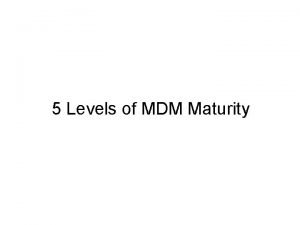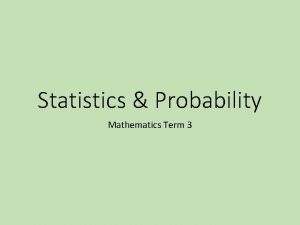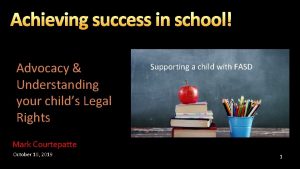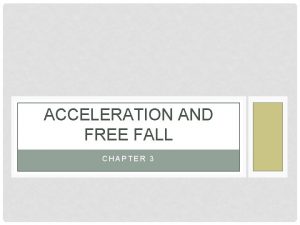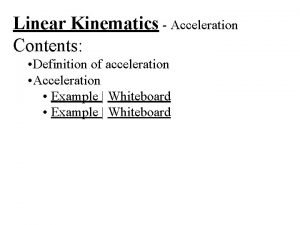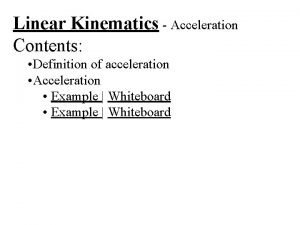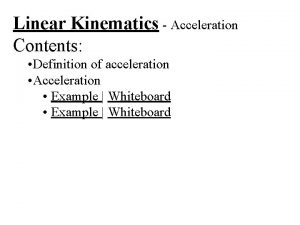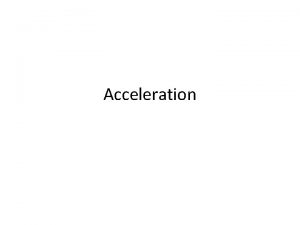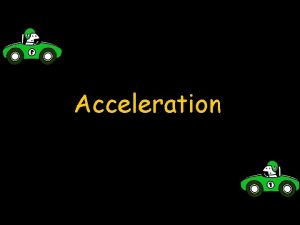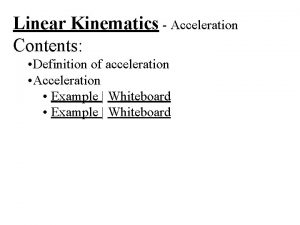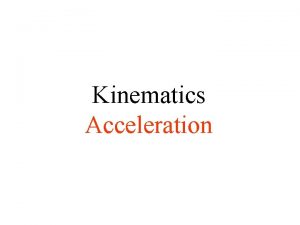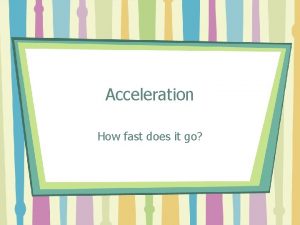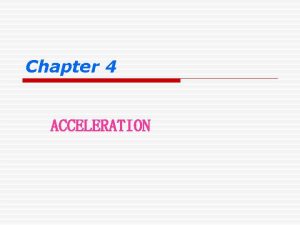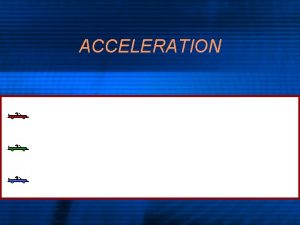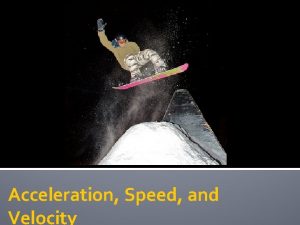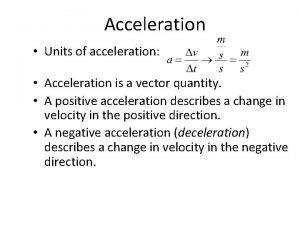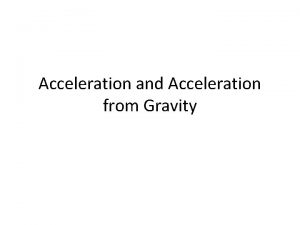Acceleration in Mathematics A Matured Model for Success




















































- Slides: 52

Acceleration in Mathematics: A Matured Model for Success Danielle Truszkowski Director of the Accelerated Math Program Jesse Kiefner Assistant Director of the Accelerated Math Program Kate Abromaitis Developmental Math Coordinator

Backgrou nd & Results Kate Abromaitis

• Main Campuses • Catonsville • Dundalk • Essex • Extension Centers • Randallstown • Owings Mills • Hunt Valley We serve approximately 70, 000 students per year.

Math Department • Full-time faculty are located at all three campuses with one stationed at Owings Mills Center. • Math Department offices are located on each of the three main campuses. • Math Department FTEs (Full-Time Equivalents) • FY 2011 = 2, 231. 0 • FY 2012 = 2, 200. 4 • FY 2013 = 2, 096. 9 • Math Department Enrollment • Fall 2013 = 9, 434 Spring 2014 = 7, 889

MATH 081 Pre-Algebra MATH 082 Introductory Algebra MATH 083 Intermediate Algebra MATH 111 “Liberal Arts Math” MATH 125 Finite Math MATH 131 MATH 132 Teacher Ed. Math MATH 133 Math Course Offerings MATH 135 Applied Alg. & Trig. MATH 153 Statistics MATH 163 College Algebra MATH 165 MATH 251/2/3 Pre-Calculus I, II,

Developmental Math Enrollment • FY 2013 FTEs • MATH 081 (Pre-Algebra): 302. 8 • MATH 082 (Intro. Algebra): 377. 6 • MATH 083 (Inter. Algebra): 481. 1 • Fall 2013 Enrollments • MATH 081 (Pre-Algebra): 1, 564 78 sections • MATH 082 (Intro. Algebra): 1, 823 95 sections • MATH 083 (Inter. Algebra): 2, 381 107 sections

Accelerated Mathematics Program – AMP It Up! • Established in Fall 2010 • Students Enroll in 6 -Credit “Combo” Classes • Combined Course Options: • Pre-Algebra & Introductory Algebra • Introductory Algebra & Intermediate Algebra (But…) • Intermediate Algebra & College Algebra • Intermediate Algebra & Applied Algebra and Trigonometry

MATH 081 Pre-Algebra MATH 082 Introductory Algebra MATH 111 Ideas in Mathematics MATH 125 Finite Mathematics MATH 131 MATH 083 Intermediate Algebra MATH 132 Teacher Ed. Math MATH 133 AMP Offerings MATH 135 Applied Algebra & Trigonometry MATH 153 Statistics MATH 163 College Algebra MATH 165 Pre-Calculus MATH 251 … Calculus …

Data – MATH 081/082 Combined Traditional 081/082 AMP Pass M 081 59. 2% 74. 2% Enroll in M 082 48. 9% 100. 0% Pass M 082 30. 3% 53. 9% Enroll in M 083 25. 7% 53. 9% Pass M 083 15. 2% 37. 1% Enroll in Credit math 37. 1% Pass Credit math 27. 0% Fall 2011 (MATH 081 students) Tracked for 2 Years

Data – MATH 083/163 Combined Traditional Fast-track 083/163 AMP Pass M 083 64. 5% 75. 3% 81. 2% Enroll in Credit 49. 6% 63. 0% 100. 0% Pass Credit math 39. 6% 45. 2% 65. 4% Fall 2011 (MATH 083 students) Tracked for 2 Years

African-American Students Traditional path Pre-Algebra AMP path 43. 5% 66. 0% Introductory Algebra 44. 7% 66. 7% 50. 5% Intermediate Algebra 42. 3% 58. 7% 49. 6% College Algebra 54. 1% 79. 5%

Building It Jesse Kiefner

Combined Course Options Developmental Combination Options • Pre-Algebra / Introductory Algebra • Introductory Algebra / Intermediate Algebra (But…) Developmental & Credit Combination Options • Intermediate Algebra / College Algebra • Intermediate Algebra / Applied Algebra & Trigonometry (Each combined pair totals 6 credits. )

Combined Course Setup • Combined courses are 6 -credits total. • Each student must register for two courses (3 credits each) that are scheduled during consecutive time periods. • The combined class, both sections, are taught by the same instructor. • No registration blocks! Open to all! • Students cannot drop one course; both courses must be dropped if requesting withdraw. • Topics in each course are integrated. • Students only purchase the higher-level course textbook. • Grading is separated along the way and the student receives two grades. (There’s a catch here. )

Challenge 1: How do we integrate the topics? Pre-Algebra Introductory Algebra Intermediate Algebra College Algebra Applied Algebra & Trigonometry Signed Numbers Solving Linear Equations Factoring Polynomial Functions Using Linear and Quadratic Functions to Model Data Ratios & Proportions Systems of Equations Rational Expressions Graphs of Standard Functions Systems of Equations Using Cramer's Rule Geometry Graphing Linear Equations Functions Combinations of Functions Applications of Direct and Inverse Variation Statistics Exponents Quadratics Equations Exponential and Logarithmic Functions (Advanced) Percents Polynomials Radicals Algebraic Expressions and Equations (Linear) Factoring Exponential and Logarithmic Functions (Basic) Trigonometric Functions

The Goal Lower. Level Course Content Upper-Level Course Content “dovetail strategy”

Challenge 2: How do we assess? What are the rules?

Grading in Combined Courses • Students receive a final grade for each course. • Instructors keep grading separate for each course. • Students can pass the lower-level course and fail the higher-level course. • Any student who fails the lower-level course automatically fails the upper-level course. • Students complete the same comprehensive final exam as students in traditional sections.

Traditional Class Rules 1) Pre-Algebra 4) College Algebra • 85% Rule • Common Final Exam – 30% • Common Final Exam – 2030% 2) Introductory Algebra • 85% Rule 5) Applied Algebra & Trigonometry • Common Final Exam – 30% • Applied Project Requirement 3) Intermediate Algebra • Comprehensive Final Exam • 85% Rule • Common Final Exam – 30% (Instructor Created)

Grading in Combined Courses: Semester Tests “All in One” Approach

Grading in Combined Courses: Semester Tests “Side by Side” Approach

Combined Course Instruction: Making the Connection Pre-Algebra / Introductory Algebra / Intermediate Algebra / College Algebra Intermediate Algebra / Applied Algebra & Trigonometry Lower Level Upper Level Solving Linear Equations Solving Quadratic Equations Evaluating Exponents Scientific Notation Exponent Laws Radicals Graphing Linear Functions Graphing Quadratic Functions Transformations of Quadratic Functions Factoring Determining Zeros of a Function Solving Quadratic Equations Applications of Quadratic Equations Evaluating and Graphing Exponential Functions Modeling Data Using Exponential Functions

Challenge 3: How do we effectively use the extra time?

Managing Extra Time • Interactive Labs • Group Sessions • Review for Exams

Challenge 4: How do we supplement?

How do we make up for missing content? • MATH 081 – Internal Textbook http: //www. ccbcmd. edu/math_science/math 081 te xt. html • MATH 083 – Resources Collected and Compiled in Blackboard



Advantages of Combined Setup • Overlap in course content allows for additional time to devote to more challenging topics. • Students form a supportive cohort. • Students are able to see the connection and relation between two math courses; content doesn’t appear disjoint.

Student Survey: Overall, do you consider your choice to take a combined course to be a good decision or a poor decision? Explain.

Student Survey: Overall, do you consider your choice to take a combined course to be a good decision or a poor decision? Explain.

Student Survey: What advice would you offer to another student who was considering taking a combined math course?

Student Survey: What advice would you offer to another student who was considering taking a combined math course?

Faculty Survey: Do you believe teaching a combined math course was a good decision for you?

Marketing & Training Danielle Truszkowski

Challenge 5: How do we market?

Marketing Tools Brochure Poster Commercia l https: //drive. google. com/file/d/0 B 9 p. TQMn. DM 0 j. KMy 1 Fe. Vd 2 M 1 Fx. Q 1 k/edit? usp=sharing

Challenge 6: How do ensure faculty members are prepared?

AMP Instructor Training • Instructors can take one training for all AMP courses. • How do we recruit faculty for training? • Face to Face Training vs. Blended Format General Overview Online Homework Systems Supplementary Material Technology Training Course Specifics for Each AMP

Blended Format • Instructors participate in online modules before and after in-person training. • In-person training is one full day (approximately 7 -8 hours). • All online modules are completed in no more than 10 hours. • Instructors (for now) receive a stipend for successfully completing all training requirements.





Blended Format • Instructors meet for a face-to-face training (one full day). • Instructors come with more knowledge. • Instructors have richer questions after participating in online modules. • In person, we discuss: v specifics for each AMP course v technology training v online homework systems v supplementary materials (previously discussed)

Sample: Are students properly placed? AMP (Accelerated Mathematics Program) Information for Advisers General Program Information This is an accelerated program designed for students who are capable of learning more than the typical amount of math in one semester. It is typically not an appropriate program for students who have struggled with math in the past and are consequently behind in their math credits. Successful students will generally have either placed at the high end of the placement score range for their current placement or will have earned an “A” or “B” in their previous math course. Students need to understand that for a combined course, they will be taking six credits of math in one semester and will need to plan on 12 -18 hours/week of study time, in addition to the six hours of class time.

Sample: Teachers on Day 1 Is an AMP class right for you? • Twice the tuition • Twice the time spent on homework and studying • Is this your first time taking the developmental course? • Cannot withdraw from one class without withdrawing from the other • If you fail both classes, you may not be eligible for financial aid. Make sure you discuss the new financial aid policy.

Sample: Sharing Student Surveys

Blended Format • What do instructors learn about time? • Instructors have a week to complete the last two modules online. • They are given a certificate and compensation.


Challenge 7: Where do we go from here? • Continued Marketing • Future of MATH 082/083 Combined • Combining Intermediate Algebra with Ideas in Math? • Increasing Accelerated Sections? • Accelerated Statistics Option?

Contact Us! Danielle Truszkowski 443 -840 -2654 dtruszkowski@ccbcmd. edu Jesse Kiefner 443 -840 -3737 jkiefner@ccbcmd. edu Kate Abromaitis 443 -840 -2644 sabromaitis@ccbcmd. edu
 Seeds are matured
Seeds are matured Mdm maturity model
Mdm maturity model Centripetal acceleration ac=
Centripetal acceleration ac= Angular acceleration
Angular acceleration Radial acceleration
Radial acceleration Kinetic angular energy
Kinetic angular energy Centripetal acceleration tangential acceleration
Centripetal acceleration tangential acceleration Learning intentions and success criteria for mathematics
Learning intentions and success criteria for mathematics Your child's success or lack of success
Your child's success or lack of success Your child's success or lack of success
Your child's success or lack of success Fspos
Fspos Typiska drag för en novell
Typiska drag för en novell Tack för att ni lyssnade bild
Tack för att ni lyssnade bild Ekologiskt fotavtryck
Ekologiskt fotavtryck Varför kallas perioden 1918-1939 för mellankrigstiden?
Varför kallas perioden 1918-1939 för mellankrigstiden? En lathund för arbete med kontinuitetshantering
En lathund för arbete med kontinuitetshantering Kassaregister ideell förening
Kassaregister ideell förening Personlig tidbok
Personlig tidbok Sura för anatom
Sura för anatom Vad är densitet
Vad är densitet Datorkunskap för nybörjare
Datorkunskap för nybörjare Tack för att ni lyssnade bild
Tack för att ni lyssnade bild Hur skriver man en tes
Hur skriver man en tes Magnetsjukhus
Magnetsjukhus Nyckelkompetenser för livslångt lärande
Nyckelkompetenser för livslångt lärande Påbyggnader för flakfordon
Påbyggnader för flakfordon Lufttryck formel
Lufttryck formel Publik sektor
Publik sektor Jag har gått inunder stjärnor text
Jag har gått inunder stjärnor text Presentera för publik crossboss
Presentera för publik crossboss Argument för teckenspråk som minoritetsspråk
Argument för teckenspråk som minoritetsspråk Plats för toran ark
Plats för toran ark Klassificeringsstruktur för kommunala verksamheter
Klassificeringsstruktur för kommunala verksamheter Luftstrupen för medicinare
Luftstrupen för medicinare Bästa kameran för astrofoto
Bästa kameran för astrofoto Centrum för kunskap och säkerhet
Centrum för kunskap och säkerhet Programskede byggprocessen
Programskede byggprocessen Bra mat för unga idrottare
Bra mat för unga idrottare Verktyg för automatisering av utbetalningar
Verktyg för automatisering av utbetalningar Rutin för avvikelsehantering
Rutin för avvikelsehantering Smärtskolan kunskap för livet
Smärtskolan kunskap för livet Ministerstyre för och nackdelar
Ministerstyre för och nackdelar Tack för att ni har lyssnat
Tack för att ni har lyssnat Referatmarkering
Referatmarkering Redogör för vad psykologi är
Redogör för vad psykologi är Borstål, egenskaper
Borstål, egenskaper Atmosfr
Atmosfr Borra hål för knoppar
Borra hål för knoppar Vilken grundregel finns det för tronföljden i sverige?
Vilken grundregel finns det för tronföljden i sverige? Stickprovsvarians
Stickprovsvarians Tack för att ni har lyssnat
Tack för att ni har lyssnat Rita perspektiv
Rita perspektiv Verksamhetsanalys exempel
Verksamhetsanalys exempel

